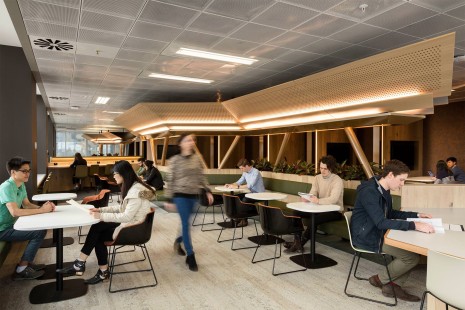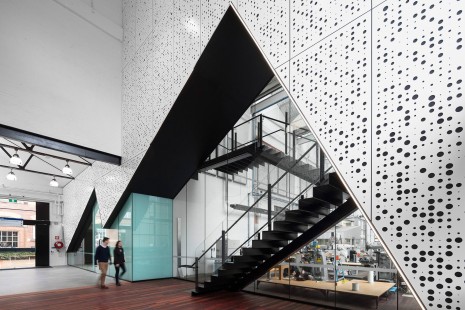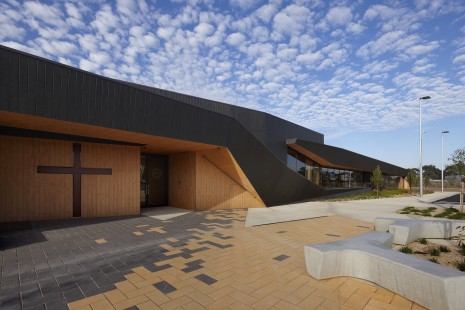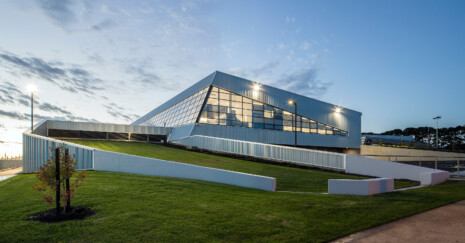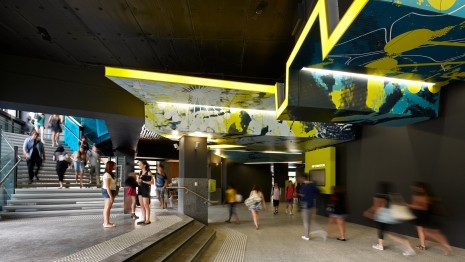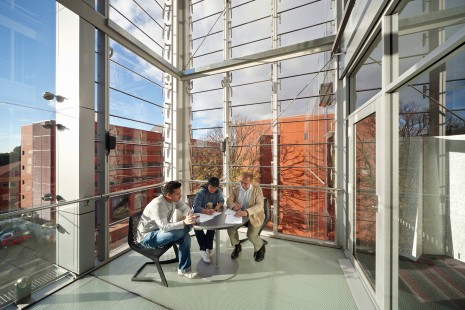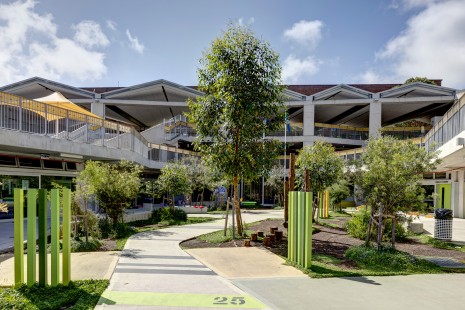
The Future of Education
The DesignInc Sydney, Adelaide and Melbourne studios are setting new benchmarks in education typologies.
The Melbourne studio is excelling within this sector by delivering responsive design that disrupts traditional spatial models to better foster outcomes of blended learning.
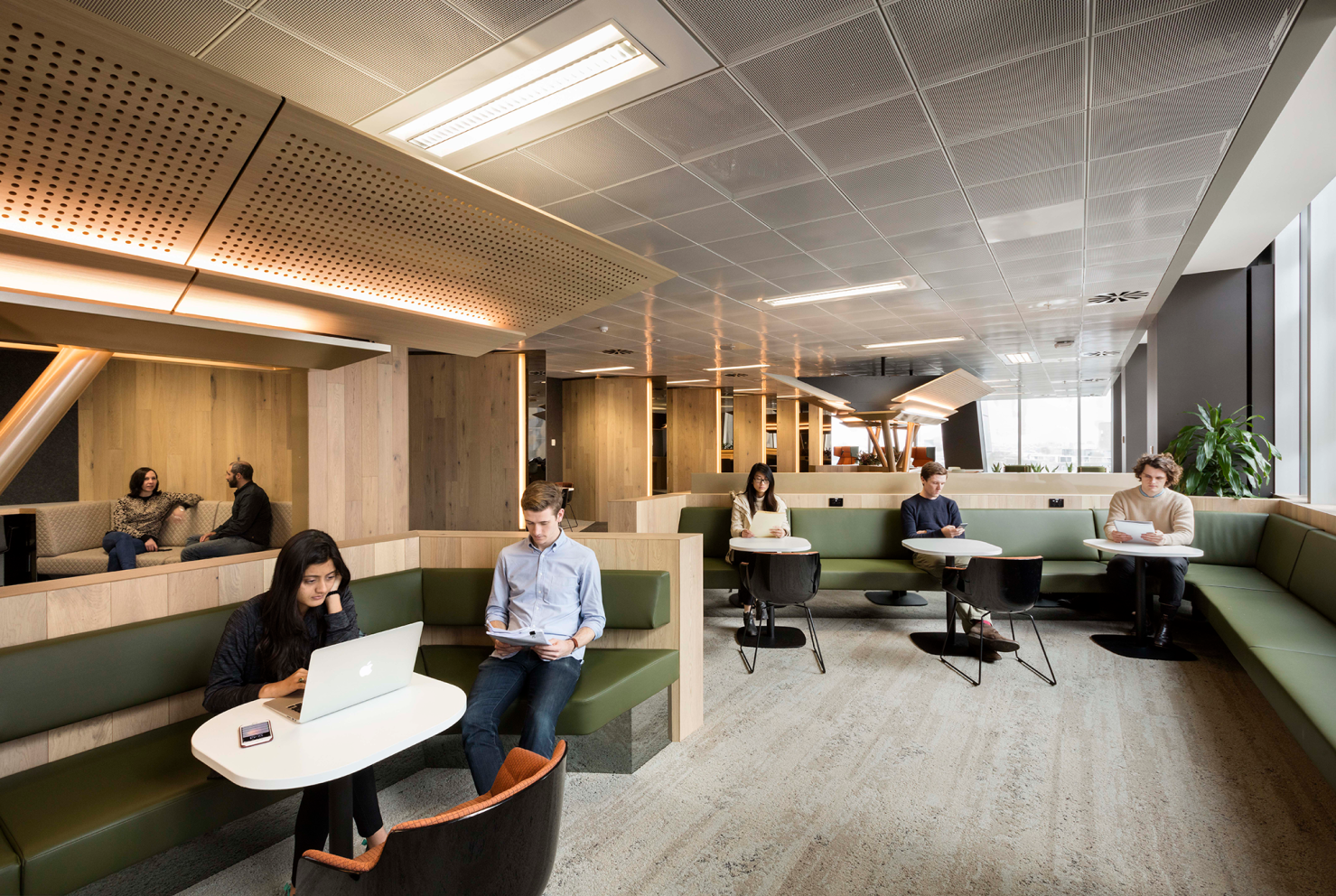
Case in point, our recent refurbishment of the University of Melbourne’s School of Engineering workshop and student spaces.
As DesignInc Associate Cameron Smith explains, “In looking to celebrate the context of the School itself, our vision was to not only deliver spaces that were flexible and dynamic, but to also put engineering on display.” By creating an internal linkway within the Workshop building, Smith and the project team have done just that. And through cladding the upper levels that separate the linkway from the workshop in white-coated perforated metal, the project receives its most dramatic expression and one that befits a School specialising in teaching state-of-the-art technologies.
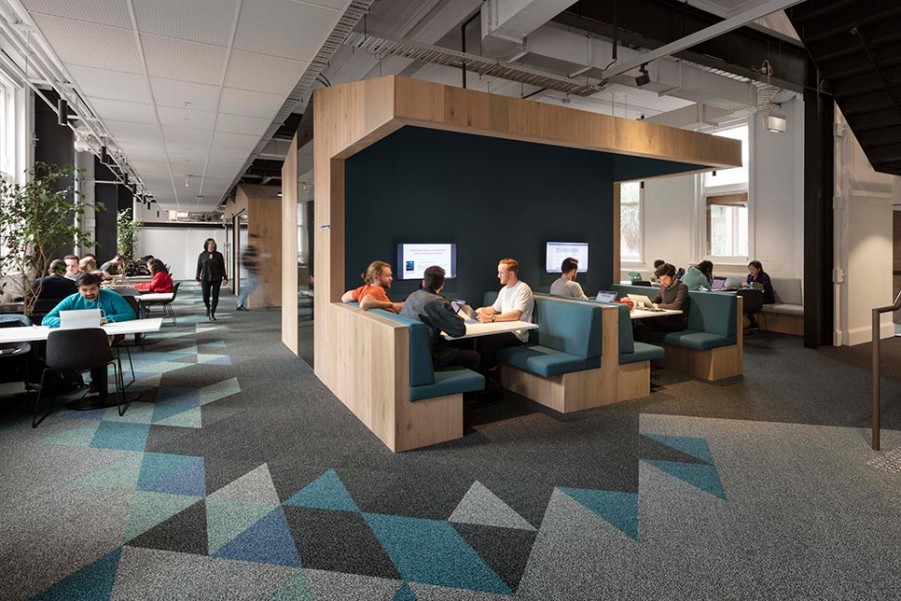
The renovation of the Old Engineering building also serves to promote interaction and once again, Smith and the project team’s agile thinking around innovative learning environments challenges the idea of how a flexible interior should function. “In this instance, flexibility comes via the diversity of fixed work settings, rather than just having a large open floor plate with loose furniture that can be moved around,” he says. These settings are essentially stand-alone pods, or ‘rooms within a room’, which respond to different student needs by supporting both autonomous and group work.
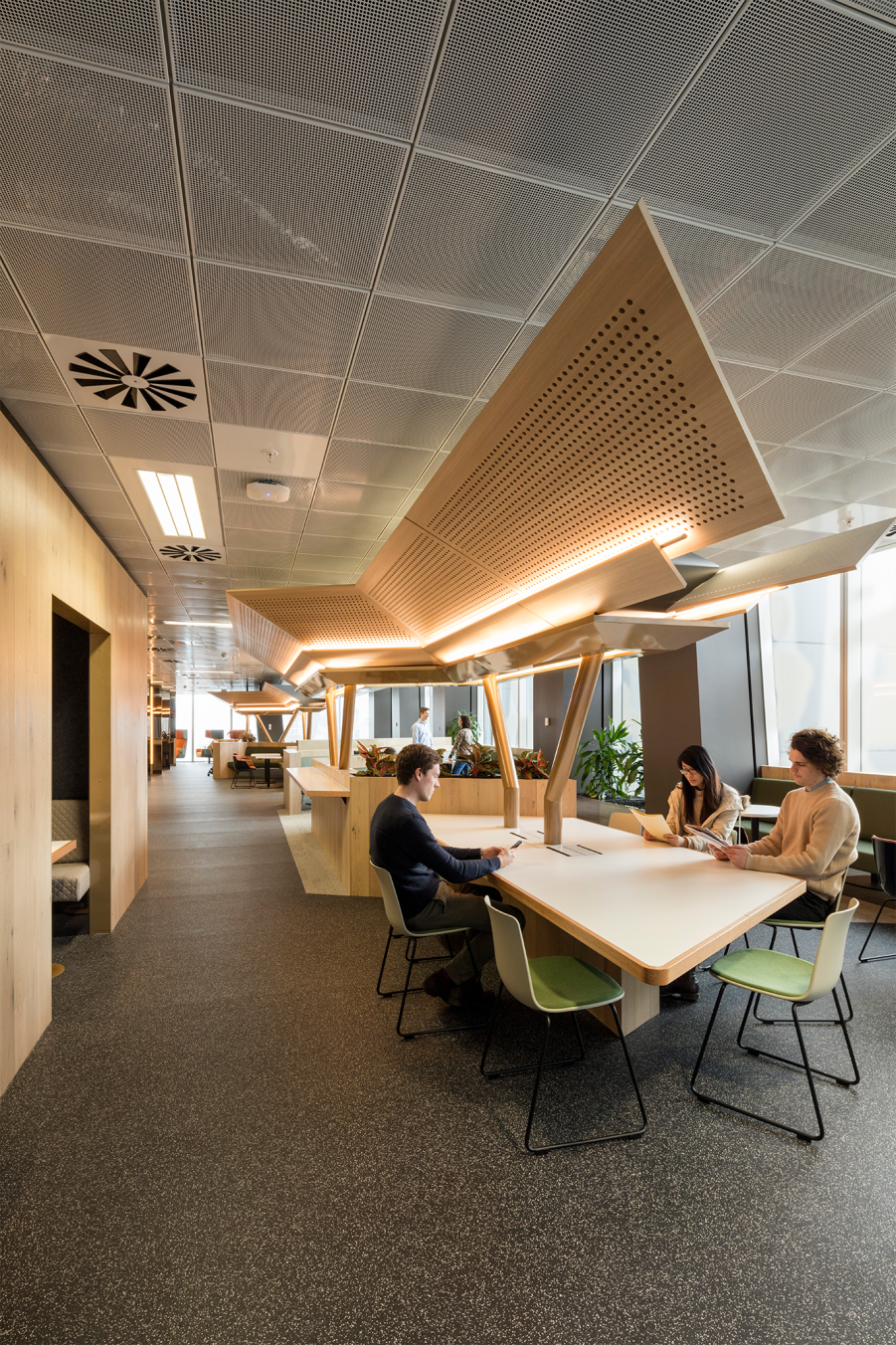
A focus on industry-ready learning also informed our Melbourne studio’s renovation of the University of Melbourne Faculty of Business student spaces, where the simple yet sophisticated scheme reflects a professional working environment. In this instance, DesignInc Associate Jane Sayers and the project team used biophilic design principles to create an environment that promotes creativity and learning, decreases stress and enables human connection through nature-inspired planning. Several sculptural timber joinery elements provide a range of different settings for students, allowing for private alcoves and small booths to be positioned around the boundary.
“It was really important to create warm spaces that invite students to linger,” explains Sayers. “And collaboration is especially well supported because the environment is so welcoming.” This project, like the University of Melbourne’s School of Engineering refurbishment balances the presence of technology, which is seamlessly integrated throughout. If students are to be encouraged to use their initiative and be enterprising, then they must have the tools with which to do so. We’ve made this happen through human-centric design that enables the best learning outcomes possible.
